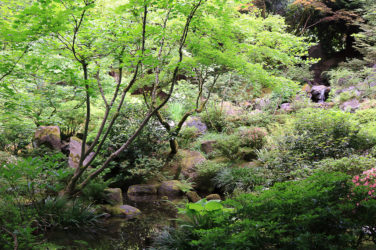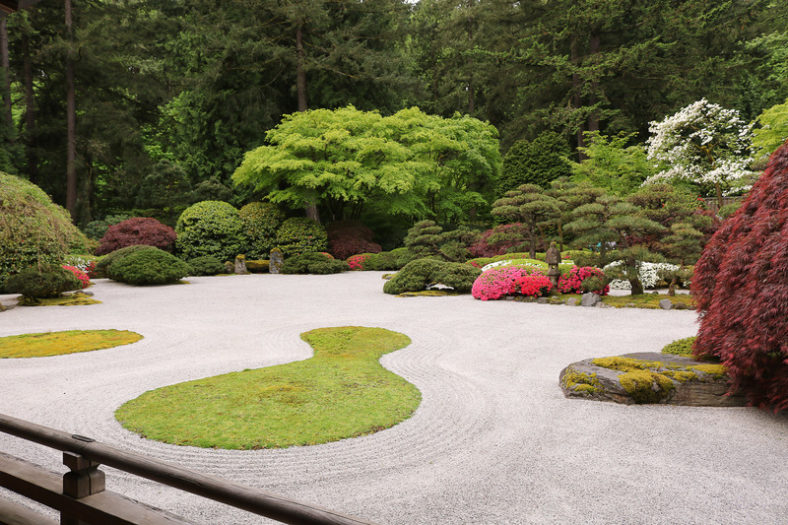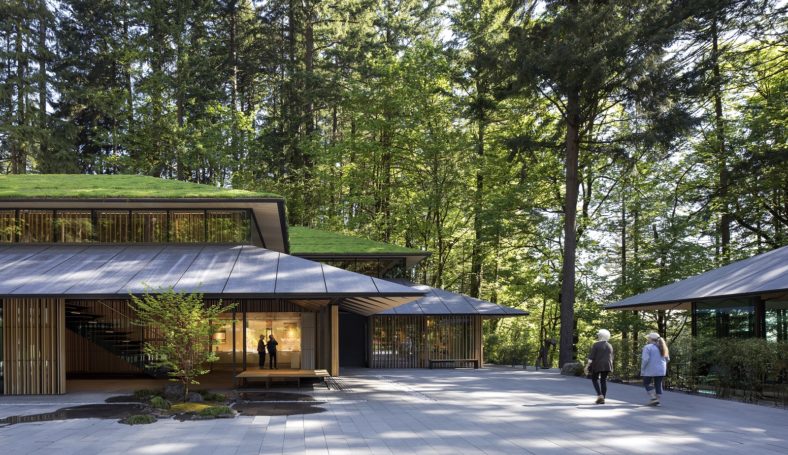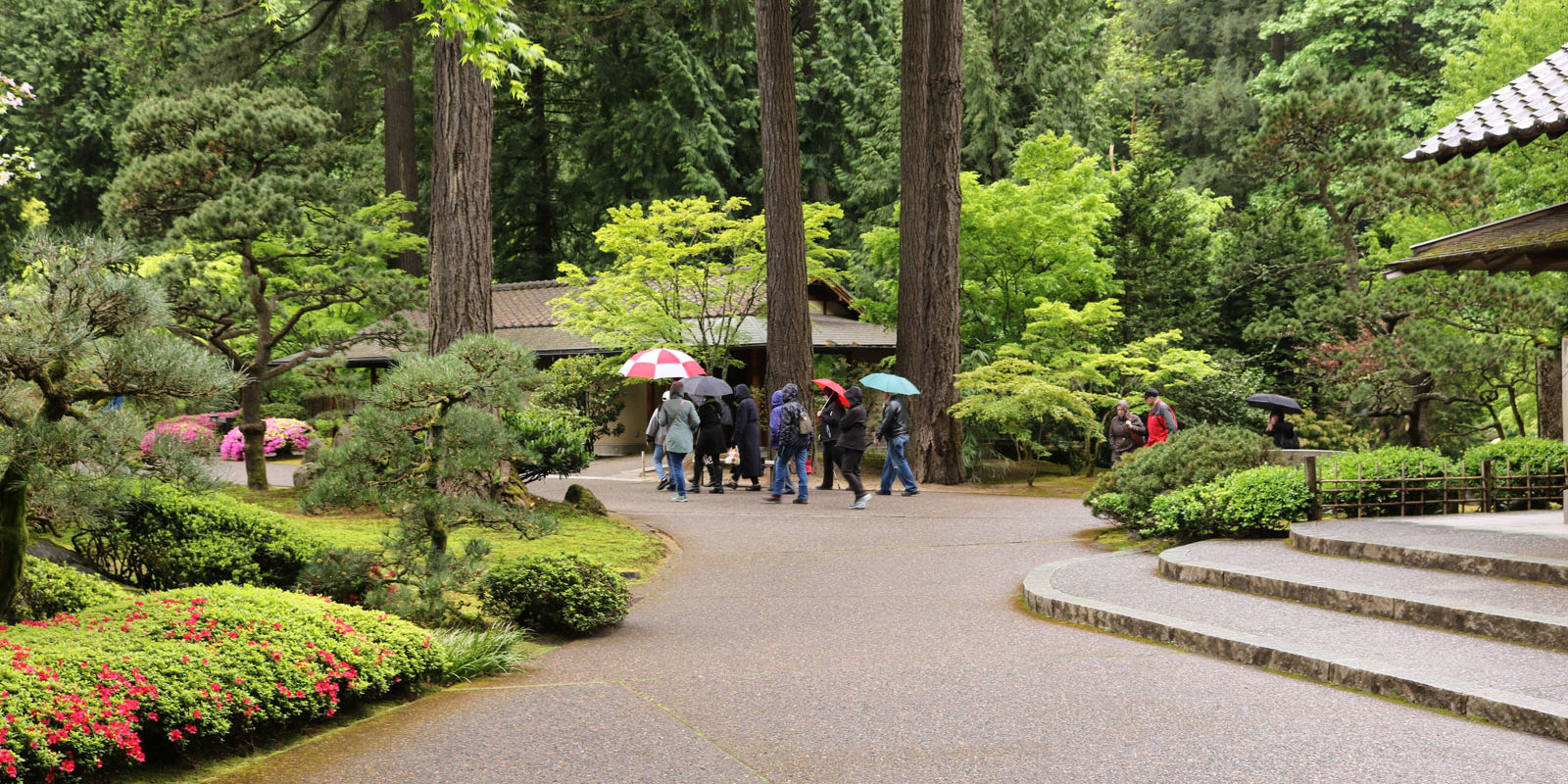Visitors to Portland Japanese Garden frequently ask whether all our plants are Japanese natives. The answer is that many are, but some aren’t. The Pacific Northwest Japanese garden is an original form with its own history and identity, and not merely a piece of Japan transplanted to an alien place. And this living cultural expression has been adapted and changed by its environment, while still maintaining its original integrity. The Japanese garden’s heart and soul transcends borders and time.
Just because the trees are not from Japan, it doesn’t mean the integrity and taste of the Japanese garden are compromised…thinking like a Japanese gardener, practicing the composition of Japanese garden design, applying the practice, and the consistent fostering of the garden are what keeps the authenticity. –Takeshi Kato, Ueyakato Landscape Co. Ltd, Kyoto

While Pacific Northwest conditions are agreeable to most common Japanese garden plants, incorporating Northwest natives into the garden can add ecological sensitivity without sacrificing authenticity. Several Pacific Northwest natives grace our eight garden spaces.
Vine maples, for example, might not be common in the temple gardens of Kyoto. But thoughtfully placed as part of a design, and cared for over time by trained gardeners, their form and texture become an authentic and harmonious garden element.

Shore pines, too, help represent an idealized vision of nature and symbolize longevity along with their red and black Japanese counterparts. And of course, having large-scale native conifers such as Douglas fir around our Garden is a distinctly Pacific Northwest hallmark.

Citing plant names brings us to another question: why don’t we label our plants? The absence of labels is not for reasons of economy. It’s because this isn’t a botanical collection meant to be understood scientifically as individual species. It’s a composition, intended to be experienced as a single work, like an orchestra playing a symphony. But for those who like to have a program that describes the music, the Garden Gift Shop now offers an answer in the form of The Tapestry of the Four Seasons, the Garden’s new plant guide. And if the guide’s information on the natural and aesthetic aspects of plants in the Garden leaves you wanting to know more, that’s where the Garden’s Training Center comes in. The Center offers hands-on workshops, lectures, and other programs for learners at all levels, including the Waza to Kokoro: Hands and Heart professional training seminar in Japanese garden arts. The seminar’s topics include stone setting and pruning techniques, bamboo fence construction, design, Japanese aesthetics, and garden history, all framed eloquently in the culture of tea and taught by visiting Japanese instructors and our own experienced Garden staff.
We invite you to come visit the Garden and learn with us – and think like a Japanese gardener.
Kristin Faurest, Ph.D., is the director of the International Japanese Garden Training Center. Learn more about the Center’s upcoming learning opportunities.
